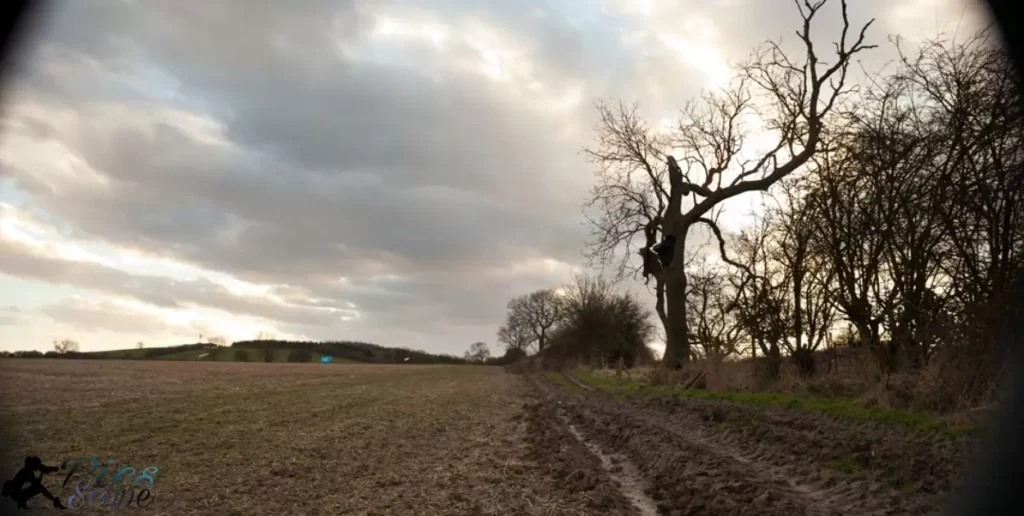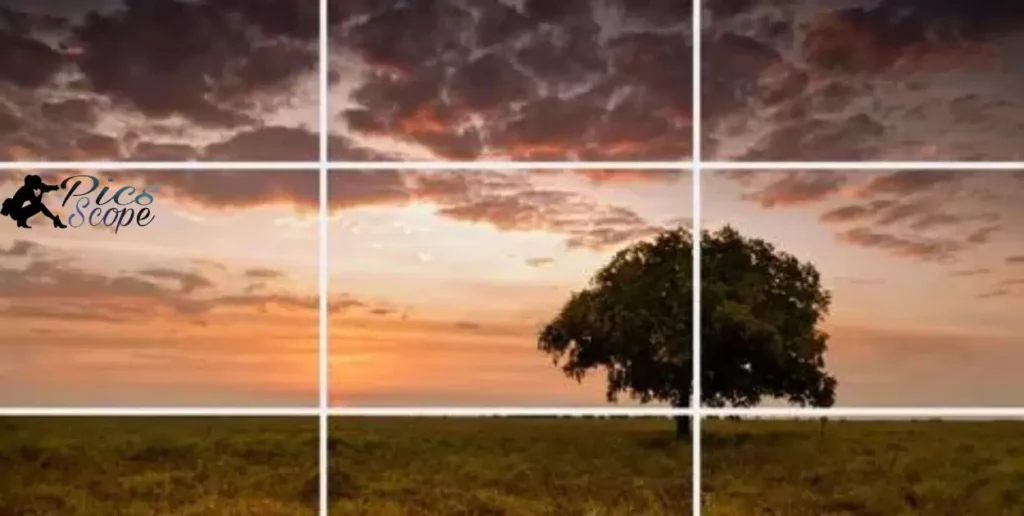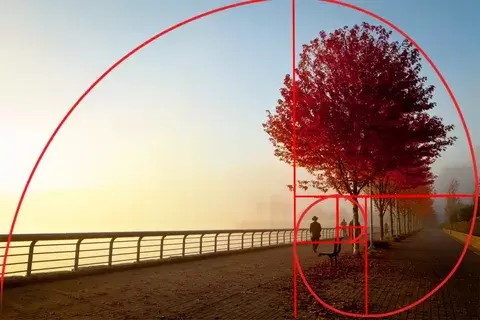Photography captures moments through a camera’s lens, freezing time with light-sensitive materials. Photographs preserve memories, emotions, and scenes, employing composition, lighting, and focus to create compelling visuals.
What Is Vignetting In Photography? It’s an intentional artistic touch where images subtly fade into darkness at the edges. Rather than a flaw, photographers purposefully use vignetting to draw attention to the central subject, creating a specific mood or emphasizing key elements.
Vignetting in photography intentionally darkens corners or edges, achieved through lenses, post-processing, or natural occurrences. This technique, spanning from early photography to modern times, guides viewers’ gazes, adds depth, and evokes unique moods, showcasing the versatile impact of intentional shading in images.
Understanding Vignetting in Photography
Vignetting in photography is when the edges of a photo intentionally get darker. Photographers do this to draw attention to the main subject in the center. It’s not a mistake but a creative choice that adds a unique touch to the image.
To understand vignetting, think of it as a spotlight on your subject. By darkening the edges, the viewer’s eyes are naturally guided towards the center of the photo. This technique has been used for a long time in photography, and it’s a simple yet powerful way to enhance the visual impact of your images.
What role does vignetting play in enhancing visual narratives?
Vignetting in photography enhances visual narratives by guiding the viewer’s focus. It deliberately darkens image edges, creating a natural spotlight on the central subject. This technique adds depth, directs attention, and shapes the overall mood of a photograph.
making it a Golden Rectangle’s Impact On Stunning Photography powerful tool for photographers to tell compelling stories through their visuals. Photographers strategically use vignetting to evoke emotions, emphasize key elements, and lead the viewer’s gaze towards the most important aspects of an image.
Whether it’s a subtle shading or a more pronounced darkening, vignetting contributes to the narrative flow, allowing photographers to craft images that captivate and communicate their intended message effectively.
The Historical Roots of Vignetting in Photography
Vignetting in photography has deep historical roots, dating back to the early days of the craft. Photographers intentionally darkened the corners or edges of images to create a specific atmosphere or draw attention to the central subject.
This technique was not a flaw but a deliberate choice, adding a touch of artistry to photographs. In the past, photographers achieved vignetting by using specific lenses or manipulating exposure during the development process.
This intentional darkening effect became a distinctive feature in many iconic photographs. Over time, as photography evolved, vignetting continued to be embraced creatively, shaping the visual language of the craft and leaving an indelible mark on its rich history.
How has the intentional darkening of edges shaped photography through time?
Photographers intentionally darken edges in a technique called vignetting. This deliberate choice has significantly influenced the visual storytelling aspect of photography over the years. It adds depth and draws attention to the central subject, creating a unique mood.
From the early days of photography to the present, this method has evolved, becoming a versatile tool for photographers to enhance the impact of their images. Experimenting with vignetting techniques allows photographers to shape the viewer’s focus and guide their gaze.
This intentional darkening, achieved through various means, including lenses and post-processing, has become a distinctive feature in many iconic photographs. As photographers continue to explore and push creative boundaries, the intentional use of vignetting remains a key aspect in shaping the overall narrative of their visual stories.
Different Techniques, From Lenses to Post-Processing in Photography
Photographers employ various techniques to achieve vignetting, enhancing their compositions. These techniques range from utilizing specific lenses to post-processing methods, each contributing to the intentional darkening of edges in photography.
| Technique | Description |
| Lens-Specific Vignetting | Selecting lenses with natural vignetting characteristics to add a subtle touch to the overall image. |
| Post-Processing Software | Enhancing or introducing vignettes during the editing phase using software like Adobe Lightroom. |
| Lens Hoods and Filters | Using accessories like lens hoods or filters to control the amount of light reaching the camera sensor. |
| Natural Vignetting | Leveraging environmental conditions, such as low light, to naturally create vignettes in the image. |
These techniques offer photographers a range of options to experiment with and choose from, allowing them to tailor the vignetting effect to suit the specific mood and narrative they aim to convey in their photography.
Why Incorporate Vignetting in Your Photography?

Ever wonder how making edges a bit darker in your photos changes the mood? That’s vignetting in photography. It’s not a flaw, but a cool trick to direct focus and add artistic flair. You can experiment with it to create unique and eye-catching images.
When you intentionally darken edges, you transform your photo’s overall vibe. It’s like a spotlight on your main subject, making it stand out. So, why not give vignetting a try in your photography? It’s a simple yet powerful way to make your images more captivating and tell a story in a visually striking manner.
How can intentional darkening transform the overall mood of your photographs?
In photography, intentionally darkening certain parts of your image can change how people feel when they look at it. Imagine shadows gently surrounding your main subject, creating a cozy or mysterious atmosphere.
Experimenting with vignetting in your photography allows you to guide the viewer’s focus and evoke different feelings. Whether you want to create a warm, nostalgic vibe or add drama to your images, the intentional darkening of edges provides a simple yet effective tool for shaping the overall mood of your photographs.
The Artistic Impact, Using Vignetting to Direct Focus in Photography
Vignetting in photography isn’t just a technical aspect; it’s an artistic tool. When intentionally darkening the edges, photographers guide the viewer’s attention to the main subject. This creative use of vignetting helps create a visual emphasis, enhancing the overall impact of the photograph.
Photographers employ vignetting to direct focus, drawing the viewer’s eyes toward the center of the frame. By subtly darkening the edges, they add depth and intrigue, making the subject stand out and creating a compelling visual narrative.
Experimenting with Vignetting, What creative possibilities does it unlock?
Discover the creative world of vignetting in photography! Vignetting is like a paintbrush for your images, adding a unique touch by subtly darkening the edges. As you experiment with vignetting, you’ll find it’s not just about correction but a tool to guide attention and create mood.
Unleash your creativity by intentionally darkening corners or edges. This technique directs focus, enhancing the visual impact of your photos. Whether it’s a gentle shading or a bold statement, vignetting offers a simple yet powerful way to elevate your photography and tell stories in a visually compelling manner.
When and where to effectively apply vignetting in your photography
In photography, knowing when and where to use vignetting is crucial for creating captivating images. Instead of being a random addition, intentional vignetting can enhance your photo’s mood and draw attention to the main subject.
Consider applying vignetting in situations where you want to guide the viewer’s focus toward the center of the frame. Use it sparingly, especially in portraits, to add a subtle touch that frames the subject without overwhelming the entire image.
Mastering Vignetting Techniques in Photography

Photographers can master vignetting by understanding their lenses. Some lenses naturally produce vignetting, and choosing the right lens can enhance this effect. Adjusting camera settings and experimenting with post-processing tools help achieve the desired vignette, allowing photographers to add a touch of artistry to their images.
In post-processing, photographers can use software like Adobe Lightroom. With a few simple clicks, they can control the intensity and size of the vignette. Learning to balance these settings is key to mastering vignetting in photography. By actively engaging with their equipment and software, photographers can confidently incorporate this technique into their creative toolkit.
Photography Lenses and Vignetting, What you need to know
Photography lenses play a crucial role in creating stunning images. When it comes to vignetting, the type of lens you use matters. Wide-angle lenses are more prone to vignetting, causing darkened corners. On the other hand, telephoto lenses often produce images with less noticeable vignetting.
Understanding your lens is key to mastering vignetting. Different lenses bring unique characteristics to your photos. Experimenting with various lenses helps you control and utilize vignetting effectively in your photography. So, get to know your lenses, embrace their quirks, and elevate your images by leveraging the intriguing impact of vignetting.
Achieving the perfect vignette in your images
Creating the perfect vignette in your images involves post-processing magic. You take control after clicking the photo, enhancing its visual impact. Adjust brightness and contrast, subtly darkening the edges to draw focus and evoke a specific mood.
In post-processing, you wield the tools to achieve the desired vignette effect. Use software like Adobe Lightroom or Snapseed to tweak exposure and saturation. By mastering these techniques, you can transform your images and add a touch of post-processing magic to achieve the perfect vignette.
Natural Vignetting: How environmental factors contribute to the effect
- Light Conditions: Natural vignetting occurs when light is unevenly distributed across the frame.
- Lens Characteristics: The lens design can cause light falloff towards the edges, contributing to vignetting.
- Environmental Elements: Shadows from nearby objects or foliage can naturally darken certain areas.
- Atmospheric Conditions: Haze or mist in the environment can create a gradual darkening effect.
- Sun Position: The angle and position of the sun in the sky play a role in natural vignetting
Enhancing Your Photography with Controlled Vignetting
Mastering controlled vignetting can elevate your photography. Start with understanding your lens – wide-angle lenses often intensify vignettes. Experiment with aperture settings; wider apertures can enhance the effect. By using controlled vignetting, you guide viewers’ focus and add a touch of artistry to your compositions.
When editing, employ post-processing software to fine-tune vignettes. Adjusting brightness and contrast in specific areas helps control the darkening effect. Remember, subtlety is key; a gentle vignette can enhance without overpowering. With these tips, you’ll confidently wield controlled vignetting to bring depth and emphasis to your photographic storytelling.
Common Misconceptions about Vignetting in Photography
Many think vignetting in photography is always a flaw, but that’s not true. It’s not an unintended mistake; instead, photographers deliberately use it for creative purposes. People often believe that vignetting ruins the entire photo, but in reality, it can enhance the focal point and mood.
Some may think vignetting only happens accidentally, without control. However, photographers actively apply this technique to guide viewers’ attention and add depth to their images. Breaking free from the idea that vignetting is always undesirable allows photographers to harness its artistic potential and create visually appealing compositions.
Is vignetting always an unwanted flaw in photography?
Is vignetting in photography always a problem? Not necessarily! Vignetting can be a deliberate choice by photographers to add a touch of artistry to their images. It’s a technique where the edges darken, drawing attention to the central subject.
Rather than a flaw, photographers use vignetting creatively to enhance mood and emphasize key elements in their compositions, turning what might seem like an issue into a powerful tool for visual storytelling. So, next time you notice vignetting in your photos, consider it as a potential artistic boost rather than a problem to be fixed!
Dispelling Myths: Understanding the intentional use of vignetting
Some believe vignetting is always a mistake in photos, but that’s not true. Photographers intentionally use vignetting for creative effects. It’s not a flaw; it’s a deliberate choice to draw attention or create a specific mood in the picture.
Understanding intentional vignetting is key. It’s about enhancing the visual impact of an image, guiding the viewer’s focus, and adding depth. So, next time you see darkened edges in a photo, it’s likely an intentional and artistic use of vignetting, not an error.
Minimizing unintended vignetting in your images
When dealing with unintended vignetting in your image, a key approach involves adjusting your camera settings. Experiment with different apertures and shutter speeds to find the right combination that reduces darkening at the edges. Choosing a lens that is less prone to vignetting can contribute to minimizing this effect.
Another practical solution is utilizing post-processing software. In programs like Adobe Lightroom or Photoshop, you can easily correct vignetting issues by adjusting the exposure and brightness levels. Simple tweaks to the image’s contrast can also help reduce unintentional darkening, ensuring your final photograph is free from distracting shadows at the corners.
Breaking free from traditional views on vignetting in photography
In photography, breaking free from traditional views on vignetting means exploring new and unconventional ways to use this technique. Instead of seeing vignetting as a flaw, embrace it as a tool to add depth and emphasis to your images.
Experiment with different degrees of darkening at the edges to push the boundaries of what’s considered typical. Play with the creative possibilities of vignetting, allowing it to enhance the mood and draw attention to your subject. By breaking away from conventional norms, you can discover unique and captivating ways to incorporate vignetting into your photography, adding a fresh perspective to your visual storytelling.
Showcasing the Impact of Vignetting in Photography

Vignetting in photography is like a visual spotlight, subtly darkening the edges of an image. It guides the viewer’s focus toward the center, creating a captivating effect. Renowned photographers use this technique strategically, adding depth and emphasizing key elements in their compositions.
When you see a photograph with vignetting, notice how your eyes naturally gravitate towards the center. It’s like a gentle invitation to explore the heart of the image. This intentional darkening enhances the mood, making the photo more engaging and leaving a lasting impression on the viewer.
Examining renowned photographers’ use of vignetting
Renowned photographers often use vignetting to enhance their images. They intentionally darken the edges, directing focus to the main subject. This technique adds depth and emotion to the photographs, creating a unique visual impact.
In various case studies, photographers showcase how vignetting contributes to the overall mood. It’s not just a technical choice but a creative one, guiding the viewer’s gaze and making the subject stand out. By studying these cases, photographers gain insights into the effective use of vignetting as a powerful tool in their visual storytelling arsenal.
How Is Photography Vignette Created?
Creating a photography vignette involves intentionally darkening the edges or corners of an image. Photographers achieve this effect through various methods, including specific lenses, post-processing techniques, or even environmental conditions.
These intentional choices guide the viewer’s focus, add depth, and create a unique atmosphere in the photograph. In practice, photographers can experiment with vignetting by adjusting camera settings, utilizing lens filters, or applying post-production edits. Some cameras also offer in-built settings that allow users to add or reduce vignetting effects.
Vignetting In Photoshop
In Photoshop, vignetting is a cool effect. You can easily add it to your photos for a unique look. To do this, go to the “Filter” menu, choose “Lens Correction,” and then adjust the “Vignette” slider. Play around with it to see what fits your style.
Vignetting in Photoshop is a simple way to enhance your images. It adds a touch of drama or focuses attention on the center. Don’t forget to experiment and find the perfect balance for your photos.
What Is Vignette In Games
In gaming, a vignette is like a subtle frame that appears on the edges of the screen. It’s not a glitch, but a deliberate design choice by game developers. This technique helps focus your attention on the center of the screen, making the gaming experience more immersive.
The vignette effect is often used to create a cinematic feel in games. It adds a touch of style by darkening the corners, enhancing the atmosphere or emphasizing important details. Next time you play a game and notice the edges slightly dimmed, that’s the vignette at work, guiding your eyes and enhancing the visual impact of the virtual world.
What Is Vignetting In Photography Nikon?
Vignetting in Nikon photography refers to the intentional darkening of image corners or edges. Nikon photographers use this technique creatively to draw attention to the central subject. It’s a deliberate choice made by photographers, adding a unique touch to images by guiding the viewer’s gaze and enhancing visual impact.
Nikon cameras offer various settings and lenses that allow photographers to control and experiment with vignetting. By adjusting these parameters, photographers can achieve different levels of darkening. contributing to the overall mood and composition of their shots. In Nikon photography, understanding and utilizing vignetting can elevate the artistic quality of images, offering photographers a versatile tool to express their creativity.
FAQ’s
What Causes Vignetting In Photos?
Darkening at image corners results from factors like lens limitations and camera settings.
Is Vignetting Good Or Bad?
Vignetting can be a creative tool when intentional; it’s not inherently good or bad.
How Do You Prevent Vignetting In Photography?
Avoid wide-open apertures and extreme lens settings, and use post-processing techniques judiciously.
How Do I Vignette A Photo?
Experiment with camera settings, lens choices, or apply post-processing effects to achieve intentional vignetting.
Conclusion
Vignetting in Photography emerges as a powerful artistic tool rather than a mere technical flaw. Photographers intentionally use this technique to add depth, guide focus, and enhance the overall mood of their images.
Achieved through lens choice, camera settings, or post-processing, the intentional darkening at the edges proves to be a versatile and creative aspect of photography. As photographers continue to explore the nuances of Vignetting in Photography, they unlock new dimensions of visual storytelling.
Embracing this intentional shading not only shapes the viewer’s perception but also allows for endless possibilities in expressing creativity. As you venture into the world of photography, consider the impactful role that Vignetting can play in elevating your images and conveying a unique narrative.







